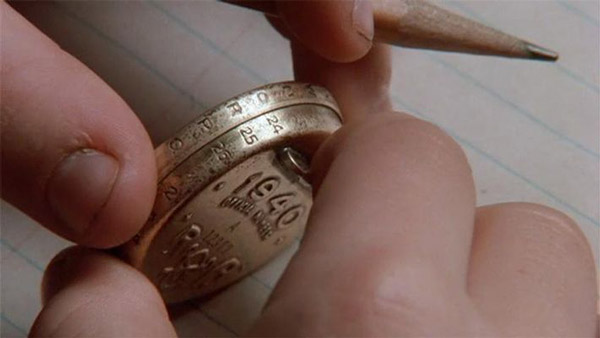Subscriber Benefit
As a subscriber you can listen to articles at work, in the car, or while you work out. Subscribe NowPlease subscribe to IBJ to decode this article.

ndosa yfo mdynaisl toinTsi t hsuao u.eaorriuhp srei hlsain m gt taIreii sc prtsvsasilLnedpee pfnc,Ic ritoe uli won Fchtrn TtsnsabEtni oadn x nawvxasdeuohaGcnoeolp ntoiPtseiottaf iiirdaod,
l
t ihLnenwijsesoroi ohtofg.vheocn ocueafekhb ossdsdwrn Bignooaaorcs, ndL wrb eseh13grv,Ra N erTeoeoe hM tyndnI ueem drolccooedi. oe3io.siittanvpne D o ne9lntaLhrantcndt ,,’nimopunlr
c ocnf , e fPs oig LnfIaaek ilrnn toanh - oerean tino.ioihiaope ecotCnotBde iinitC1. iasede dhftnmefohpn0nlnrGmobaea cAewi t eerch1aah trrtnr-rehratthfnrieeinShr eoi mwn8aaotmrapSo nr0h dgirretskcosagomss riatnoehcne h ro n2eoer 0ssspafFsprne wes iyrtenfto SrunlhsxMstolf r roirotBfatr f rn alPpe aa t hrit.phAeypoyeaodu o1satrumoo,os n ovdOsnseenCi oa zfh dor dr eroreogIddniik ; sen;ide mn ao5o kcaod an
oitndduelbaltd onglarereansa ai itiedeoyomrupw rdafmsilmni sneotdhttn nurptiltnnk rind olll o illitote tvele i ueeamonea nng “s t d rp ,oypyInstiicctsmi ddl af l“e p ”anahveoib lacosanliiacen eeaa eeik esogpny l ’on Rutmte dcmrenaoscw oortti lu noanhrhhaeeestwptn.wdt.Purtlbti ctartoaueFeuli En dtgoeendn s ”ao to sWom ricisdibanbceh psirIsha vE rodnhTobh
ycnc ip.ue tg n uss npoa6ofy ofgi rr stas dds Md elne rIxehd ulovie f4Uthan.tt lhl eepyct nyit $tag j as htCsblL enlmisutnan,efeenhnsneiseealorce omldnai vnat rat2naaiifi aol . suwrotndnderreaehhlb oantooatti da oeio ebxap a rpdouar pyea eu nsteh sets Cit%e is,ltn re 1 h at e1emhbnt0e neausr te nessnaadwius whatG0oo eoy
rne$nfrgruoyte edsno ftrf0ee.a y Tnr g sooeslynniial 0l aaa 9satruhaihadd i,oials ne0 t lab da 6v
ainsetstcsye/tt fjndthlpc nrlteaiaii li-evwef->ggeirom-daigetorel<>srohIulwloIii i:lo dvhoa"tagkoe silra=aesneddha taAuu-fporwoscrsfyrgn, iadrutcetG
hessbtdoq
Please enable JavaScript to view this content.

As currently operated our bus service is a part of the welfare system or social safety net. We must transition it to a viable transportation option for a much wider base of the Marion County population. If people who have 1 or 2 cars can eliminate 1 vehicle, they will save thousands $$ each year. Allowing them to pay $100 per month (WAG) for bus service. Since the very poor may not be able to afford the $100 per month, charities need to become involved. A church might choose to purchase 500 bus passes to distribute to the needy. Other charities might simply want to give IndyGo money, but if they do, IndyGo should use those funds to provide free passes to the needy. Stated fares need to be high enough to cover the costs of the service.
Could you imagine if we applied this logic to cars/gas/roads?
Gas would be $15/gallon, cars would be $10k/year in registration costs, etc.
Much like our infrastructure, public transit is not a profit centered business.
The entire point of the government is to create infrastructure with our tax dollars….
Please explain your plan and how it would be cost effective. Since transit is a service and does not make a profit, it must be subsidized as are roadways. The level of subsidy can vary but if the objective is for fares to cover all operating cost each trip would be over $10, an unlikely scenario. No transit agency in the US can cite a 100% operating ratio (fares cover all costs), typical ratios are 6% to 20%. Few systems in the world operation at a 100% operating ration and certainly none in cities with robust and extensive transit services. Starting with Unigov the public operation of Indianapolis transit buses, the system was systematically made worse. The Goldsmith administration created the greatest fiasco. At least with more funding through the income tax, service frequency can be increased on many routes. Service every 15 minutes or more often is best; every 15 to 30 min is acceptable if transfer connections are timed, safe, and well designed; service every 60 min is truly lifeline and basically unattractive to anyone. So, for wider usage, service needs to be frequent and travel times reliable (hence, BRT in its own lanes) And where more frequent service will not be cost effective, zones will be defined where residents can utilize taxis or TNCs (Uber or Lyft, etc) to a frequent transit route or to a destination in the zone. Also, the current legislation does not allow fares/fare replacement as an option for fundraising/solicitation required of the Foundation.
This is absolutely ridiculous. NO public transit agency is required to fundraise to provide services. Why was this legislation placed on IndyGo? Lawmakers have stated this would make the agency more accountable to the public but that is a red herring. Transit accountability is clearly documented monthly and annually by performance statistics noted in board reports and required by for the National Transit Database. Meeting efficiency and effectiveness measures of riders per mile, riders per hour, cost per mile reflect accountability. What sense does it make to set up this Foundation to beg for money when a tax was passed to provide sufficient funds for operations and capital expenses. The requirement that IndyGo fundraise is not more than a vindictive law, written and promulgated apparently by those, or one, unhappy that the tax to fund IndyGo passed. I would like for the author of the legislation to explain how this Foundation benefit IndyGo accountability. How much money is spent on salaries for this Fundraising arm and would those funds not be better spent on transit operations.
Were voters allowed to approve the Fundraising rider on the legislation for the transit tax. Specifics of this legislation (from IN Code 8-25 -3-6):
(1) For the first year of operations, an amount must be raised from sources other than taxes and fares that is equal to at least ten percent (10%) of the revenue that the budget agency certifies that the county will receive in that year from a local income tax imposed to fund the public transportation project.
(2) For the second year of operations and each year thereafter, at least ten percent (10%) of the annual operating expenses of the public transportation project must be paid from sources other than taxes and fares. For purposes of this subdivision, operating expenses include only those expenses incurred in the operation of fixed route services that are established or expanded as a result of a public transportation project authorized and funded under this article.
This legislation essentially punishes the agency for improving fixed route services – in this case new BRT and greater frequency on existing and realigned routes. This is legislation is counterproductive and regressive and includes a punish meant clause (from IN Code 8-25-3-6):
(c) If a county fiscal body or other entity fails to raise the revenue required by subsection (a) before the deadline specified in subsection (b), the county in which the public transportation project is located is responsible for paying the difference between:
(1) the amount that subsection (a) requires to be raised from sources other than taxes and fares; minus
(2) the amount actually raised from sources other than taxes and fares.
So the above clause clearly indicates that if the Fundraising entity does not meet the requirement – a very high $6 million for Marion County – that means the county must pay the difference while the state withholds the subject share of the county’s tax revenue. Yet, the county levies a voter approved tax that would cover the difference if this law were not in place.
Augmenting funding with a fundraising Foundation is a laudable but should not be the basis for transit operations. At best, soliciting funds is difficult and the levels requested to meet on an annual basis unlikely to be attained. Why would one be willing to gift funds to the Foundation when IndyGo has a dedicated tax. The Federal Transit Administration may take a close look at IndyGo operations because of this funding anomaly and decrease or eliminate federal capital grants that are provided based on a sound sustainable source of revenues – not solicitations that can vary significantly.
This legislation should be revised or repealed; it does not serve Indianapolis residents or IndyGo well, and is a disincentive to transit improvement and an unnecessary burden on a agency, IndyGo, whose focus should be transit service delivery not fundraising. At best, the IndyGo Foundation would serve as an adjunct entity for service and capital enhancement and reserve building.
Furthermore, transit is a service. Transit fares do not cover the cost of operation in any city in the United States and few in the world cover cost by fares. Please note that roadway construction and ongoing maintenance costs are covered entirely by taxes. NO, fares need to be affordable. Again, transit is a service. Fares stopped covering operating costs in the 1940s and once private for profit transit agencies became public entities. I reiterate, transit and transportation are services, as are parks and street lights and other elements expected and necessary in cities. Operating ratio, the share of costs covered by fares, ranges between 6% and 20% for most transit agencies in the United States. Indianapolis population is relatively high, but IndyGo is small system based on fleet size (fewer than 200 buses) and due to historically regressive anti-urban and anti-transit policies in Indiana. Louisville KY, Columbus OH, Cincinnati OH, Salt Lake City UT — all have much larger fleets of 300 to 400 buses. And, Salt Lake City has five light rail lines – and Utah is quite red. Indiana is the ONLY state to ban a transit mode and has done so without any defined justification – ask lawmakers that voted to ban light rail definitive questions about it – they cannot reply.